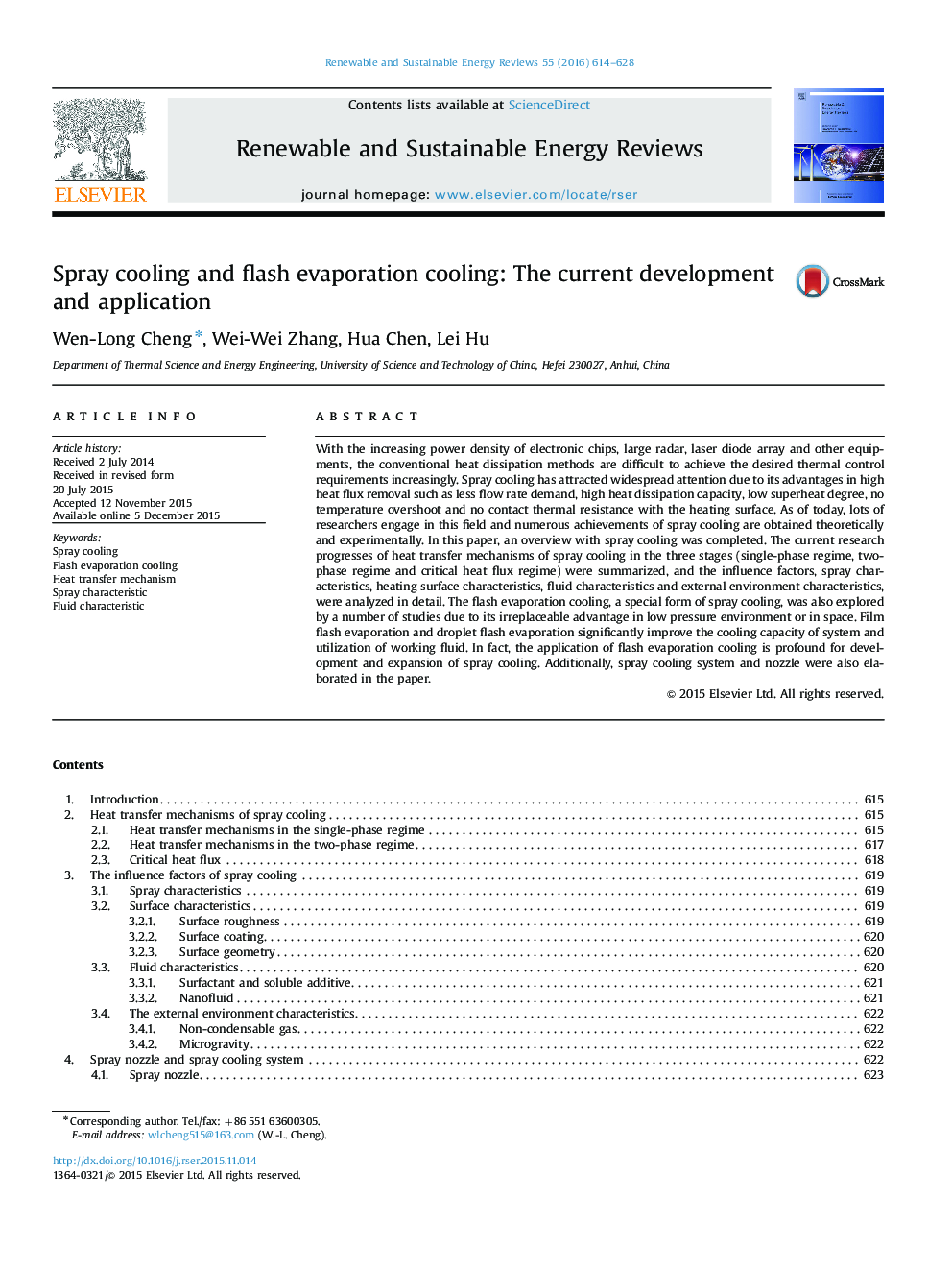| Article ID | Journal | Published Year | Pages | File Type |
|---|---|---|---|---|
| 8115308 | Renewable and Sustainable Energy Reviews | 2016 | 15 Pages |
Abstract
With the increasing power density of electronic chips, large radar, laser diode array and other equipments, the conventional heat dissipation methods are difficult to achieve the desired thermal control requirements increasingly. Spray cooling has attracted widespread attention due to its advantages in high heat flux removal such as less flow rate demand, high heat dissipation capacity, low superheat degree, no temperature overshoot and no contact thermal resistance with the heating surface. As of today, lots of researchers engage in this field and numerous achievements of spray cooling are obtained theoretically and experimentally. In this paper, an overview with spray cooling was completed. The current research progresses of heat transfer mechanisms of spray cooling in the three stages (single-phase regime, two-phase regime and critical heat flux regime) were summarized, and the influence factors, spray characteristics, heating surface characteristics, fluid characteristics and external environment characteristics, were analyzed in detail. The flash evaporation cooling, a special form of spray cooling, was also explored by a number of studies due to its irreplaceable advantage in low pressure environment or in space. Film flash evaporation and droplet flash evaporation significantly improve the cooling capacity of system and utilization of working fluid. In fact, the application of flash evaporation cooling is profound for development and expansion of spray cooling. Additionally, spray cooling system and nozzle were also elaborated in the paper.
Related Topics
Physical Sciences and Engineering
Energy
Renewable Energy, Sustainability and the Environment
Authors
Wen-Long Cheng, Wei-Wei Zhang, Hua Chen, Lei Hu,
